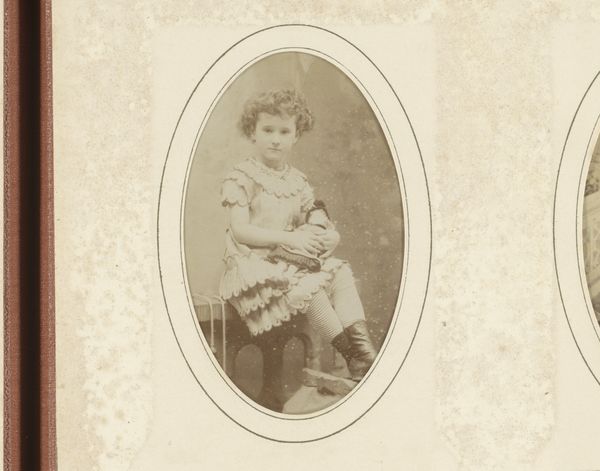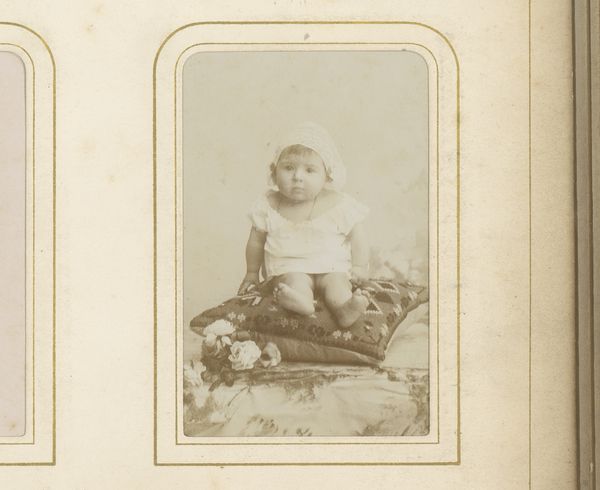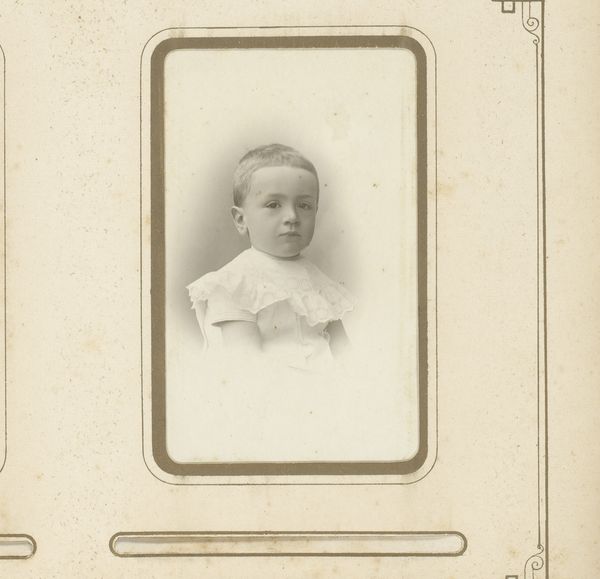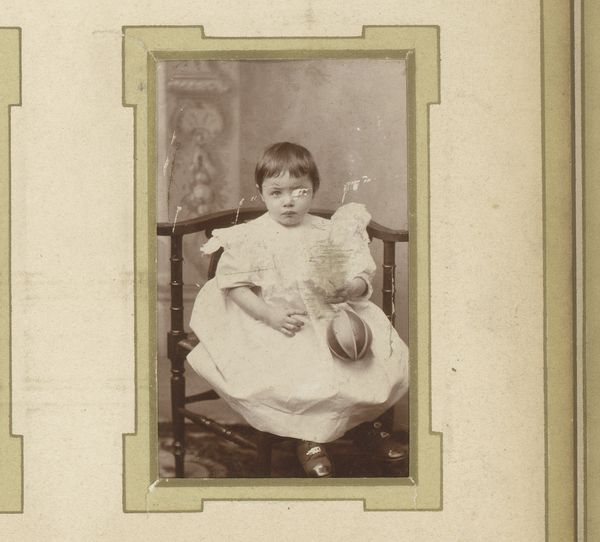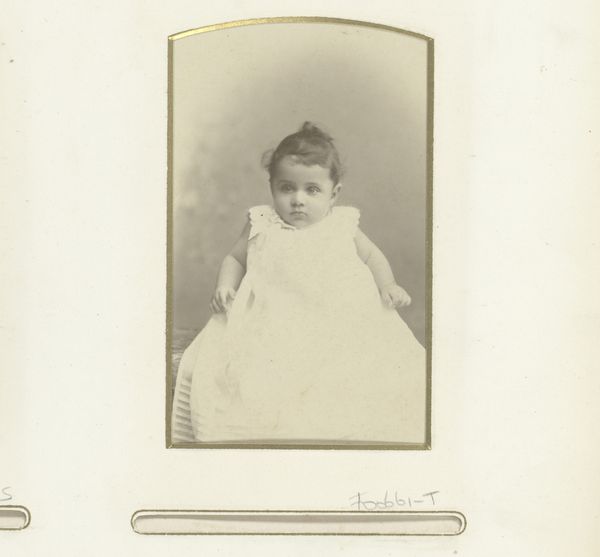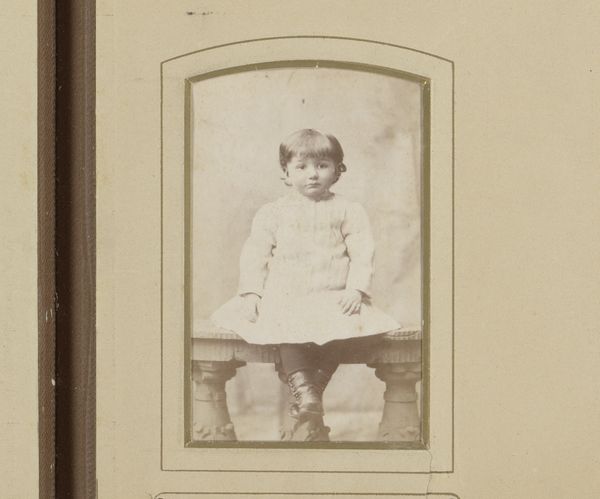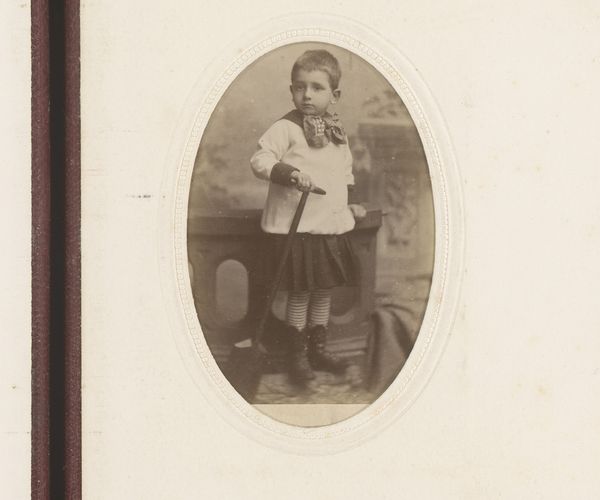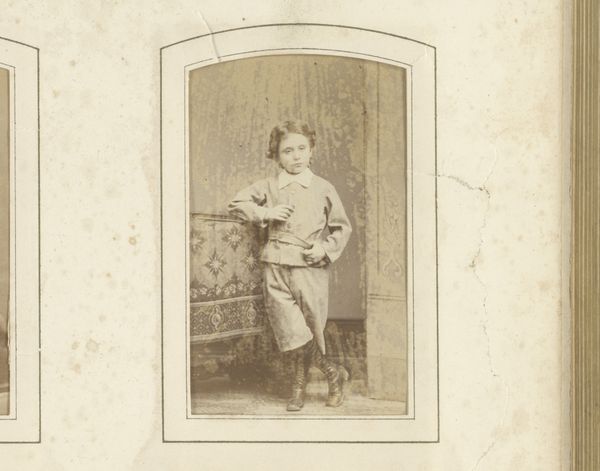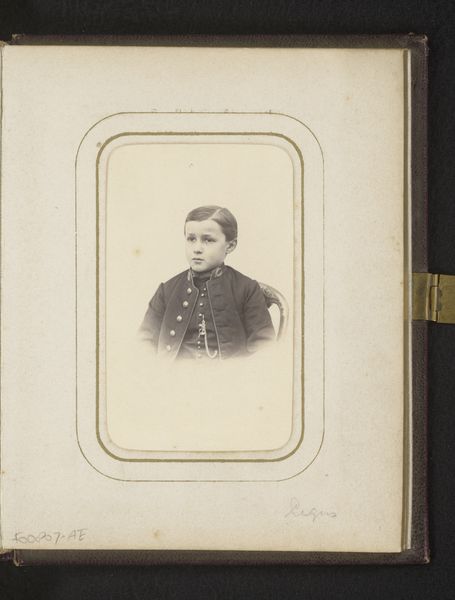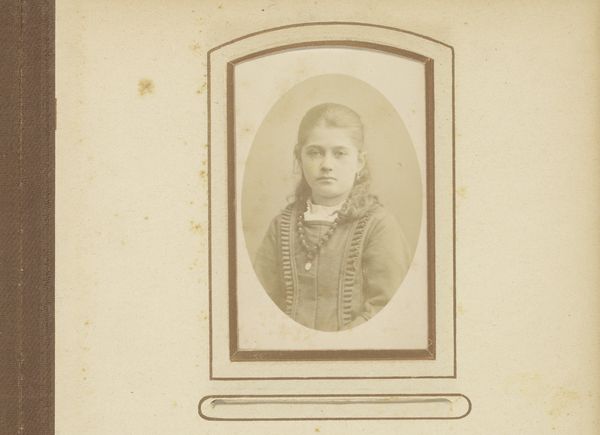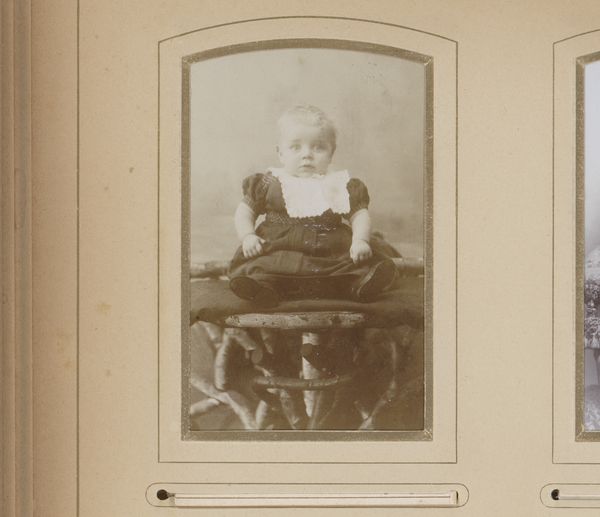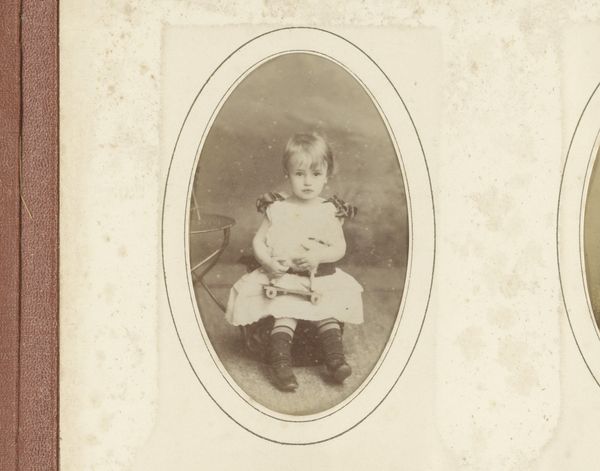
photography
#
portrait
#
photography
#
19th century
Dimensions: height 83 mm, width 53 mm
Copyright: Rijks Museum: Open Domain
Curator: Here we have an early photograph from the Rijksmuseum collection, identified as a “Portret van een jongen met ketting,” or Portrait of a Boy with Necklace. It was taken sometime between 1877 and 1906, attributed to Max Büttinghausen. Editor: Well, isn’t this darling! So subdued. I immediately notice the somber tone. It's that sepia wash, of course, and the way he's gazing… straight through time at us! Melancholy in miniature. Curator: Indeed. The image, a sepia-toned photograph, certainly evokes a particular historical mood. Let's consider the portrait's historical context. Photographic portraiture in the late 19th century became more accessible, but was still often reserved for the middle and upper classes. This portrait then suggests something about the boy’s family and their status. The chain stands out. Is it purely decorative? Symbolic? Editor: I love that question. Symbolic adornment has long had a rich language. My heart tugs at that necklace though. He is styled so formally. It almost feels as if the child is a miniature adult, weighted down by the gravity of social expectations, don't you think? Curator: I'm inclined to agree. The restrictive clothing and the formality of the portrait reflect the social norms around childhood at the time—seeing children less as children with the opportunity for the development that we value now, but seeing them as miniature members of society and representatives of family lines. Editor: I think about my own childhood portraits, a far cry from this formality. Imagine sitting still that long under those lights! The experience in itself must have made an impression. He is not smiling… perhaps they never smile? I bet that necklace itches, too! Curator: Yes, the photograph immortalizes a particular experience, laden with cultural meanings about class, gender, and identity at the turn of the century. The image and what we bring to viewing the image are the core ingredients for analysis. Editor: To me, it's a quiet echo, resonating through decades. I wonder if the weight he is portraying in his eyes, a reflection of ourselves now viewing this moment of his own history, and us a century later reading our own complexities in his past! A great photograph makes that meeting across time so potent.
Comments
No comments
Be the first to comment and join the conversation on the ultimate creative platform.
